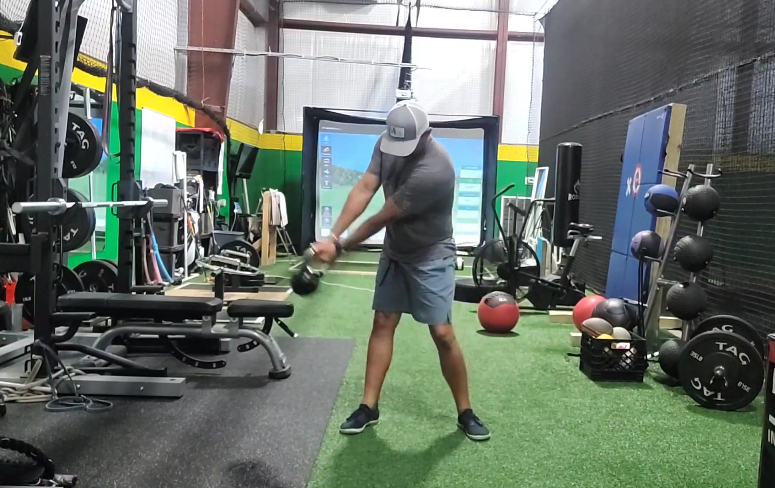
Imago
@guidrygolfandsport-dr.jpgu6517/YouTube

Imago
@guidrygolfandsport-dr.jpgu6517/YouTube
Most golfers chase swing fixes on the range. The smartest ones build them on a mat. Six Pilates exercises can unlock distance, prevent injury, and eliminate the swing flaws killing your game. Here’s the reality. Lower back pain affects 55% of professional golfers and up to 35% of amateurs. It’s the number one injury in the sport. Yet most players ignore the root cause — weak stabilizers and limited mobility. Tiger Woods credits Pilates for his longevity. The 15-time major champion uses it to relieve pressure on his lumbar spine. His glutes and core absorb the load instead.
Watch What’s Trending Now!
Annika Sörenstam followed a similar path. She used Pilates to rebuild her core strength. That foundation allowed her to compete at a high level even at age 50. So why does Pilates work for golf? It trains disassociation — the ability to rotate your upper body while keeping your lower body stable. This separation creates the X-Factor stretch. That’s the angle between your rotating shoulders and stable pelvis. More X-Factor means more torque. More torque means more distance.
Now let’s break down the six exercises that target exactly what golfers need.
ADVERTISEMENT
Top Stories
Tiger Woods Accepts New Job That Could Change PGA Tour Forever

Is Sebastian Garcia Related to Sergio Garcia?

Rory McIlroy Confirms Everyone’s Worst Fears With New LIV Golf-PGA Tour Merger Update

Paige Spiranac Nearly Took Legal Action After ‘Death Threats’ Over Internet Invitational Scandal

Jordan Spieth Loses Crucial PGA Tour Privilege After Unexplained 3-Month Absence

The Bridge: Glute Activation for Golf Power
Lie on your back with knees bent and feet hip-width apart. Peel your spine off the mat one vertebra at a time. Squeeze your glutes at the top. Roll back down slowly. Keep your core connected throughout. Do 8–10 reps.
View this post on Instagram
ADVERTISEMENT
The glutes are the primary power generators in the downswing. Research shows that low-handicap golfers have significantly stronger glutes than high-handicap golfers. Weak glutes force the lower back to compensate. That causes early extension — standing up during the swing. The Bridge wakes up those dormant muscles. It teaches your body to extend the hips without stressing the spine.
ADVERTISEMENT
Book Openers: Thoracic Mobility for Golf Backswing
Lie on your side in a fetal position with knees bent at 90 degrees. Stack your arms in front of you. Open your top arm across your body like a book cover. Follow it with your eyes. Keep your knees glued together. The rotation must come from your upper back, not your hips. Do 8–10 reps per side.
A limited shoulder turn forces the body to over-rotate the lower back. That’s a leading cause of lumbar disc injury. Book Openers isolate thoracic rotation safely. By keeping your knees fixed, you force the upper back to do all the work. This mimics the disassociation required for a wide, powerful backswing.
ADVERTISEMENT
The Saw: Rotational Control for Golf Follow-Through
Sit tall with legs extended wider than your hips. Extend your arms out like a “T.” Twist your torso to the right. Reach your left hand toward your right pinky toe. Keep both sit-bones anchored to the mat. This creates a wringing effect through your waist. Do 8–10 reps per side.
View this post on Instagram
This classic move combines rotation with a hamstring stretch. It teaches you to rotate around a stable central axis — exactly like your spine during a swing. Tight hamstrings also pull on the pelvis and compromise posture at address. The Saw loosens them while training controlled rotation through the torso.
ADVERTISEMENT
Bird Dog: Core Stability for Golf Address and Impact
Start on hands and knees with a flat back. Extend your right arm forward and left leg back simultaneously. Hold for three seconds. Don’t let your lower back sag or arch. The goal is zero torso movement while your limbs move. Do 8–10 reps per side.
The golf swing generates forces on the spine up to eight times your body weight. The multifidus muscle protects against that stress. Studies confirm Bird Dog recruits deep spinal stabilizers more effectively than crunches. This exercise trains cross-pattern stability — the diagonal connection between your left shoulder and right hip. That bracing keeps your spine neutral at address and through impact.
Clamshells: Hip Stability to Prevent Golf Swing Sway
Lie on your side with knees bent at 45 degrees. Keep your feet touching. Lift only your top knee — opening like a clam. Place your hand on your top hip to keep it from rolling backward. The movement should be small and isolated. Do 8–10 reps per side.
View this post on Instagram
The glute medius stabilizes the pelvis. If it’s weak, you’ll sway in the backswing or slide in the downswing. Both faults leak power. Clamshells isolate the outer hip muscles, which prevent lateral shifting. A stable pelvis acts as the anchor against which your upper body creates torque. Without that anchor, energy escapes before it reaches the clubhead.
Rotational power drives clubhead speed — and golfers looking to unlock that explosiveness should combine Pilates with targeted strength exercises. Do these exercises two to three times per week. Book Openers and Bird Dogs also work as a five-minute pre-round warm-up. Consistency beats intensity. Build the foundation, and your swing will follow.
ADVERTISEMENT
ADVERTISEMENT
ADVERTISEMENT

